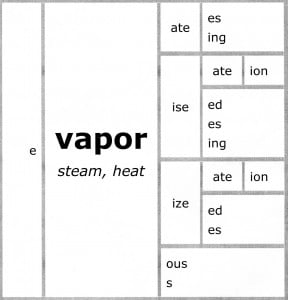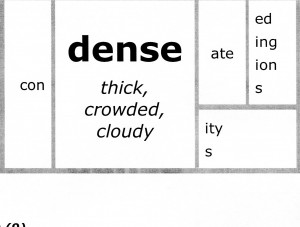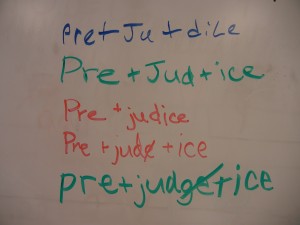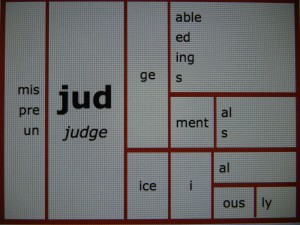Wow! It’s been a very busy eight days since I first handed out the scripts for our Photosynthesis Follies. Yesterday and today we performed for twelve different audiences! They included almost all of the students in our building and lots of parents and family members. Over and over again we explained the process of photosynthesis to all those who came to listen.
Back in our classroom, in the chunks of time between those performances, the students took a closer look at the words photosynthesis and transpiration. They began with basic definitions and then created word sum hypotheses. Watching the videos it is obvious there is more to discover. In the first video, Jacob’s research took him in many directions! He was one of three who rather excitedly asked if he could work on this at home too! This was the first time the students were off on their own to explore. The lists of words he found to prove the <ic> suffix and the <photo> prefix are impressive. He had come across many examples of <syn> as a prefix as well, but didn’t have them all written down.
In this video Zoe is also looking at photosynthesis. She has found evidence to support her word sum hypothesis <photo> + <syn> + <thesis>. Next up is understanding what each morpheme means and how they help us uncover a deeper sense of what photosynthesis is.
In the next video this team of girls came up with some interesting ideas. It is so second nature for the students to begin with the notion of sounds in words. I found it interesting that this was one of the few groups that recognized that there is an <e> that was dropped when the suffix <ion> was added. More investigating will uncover the other morphemes in this word.
The boys in the second half of this clip made a great discovery minutes after my camera battery gave up. They had found the word <expire> and were comparing it to <transpire>. I can’t wait to see what comes of this!
What an exciting time. The students are ready for the challenge of figuring things out on their own. This is going to be a wonderful year!




